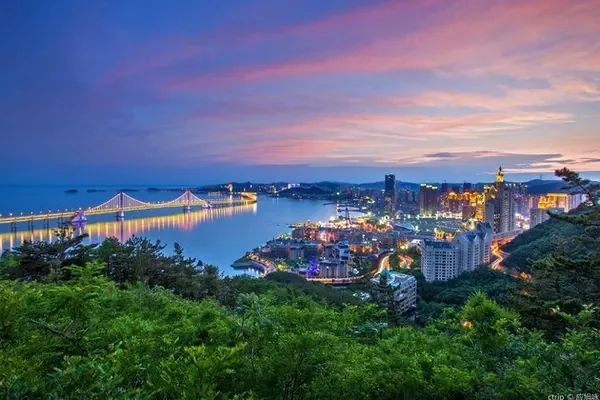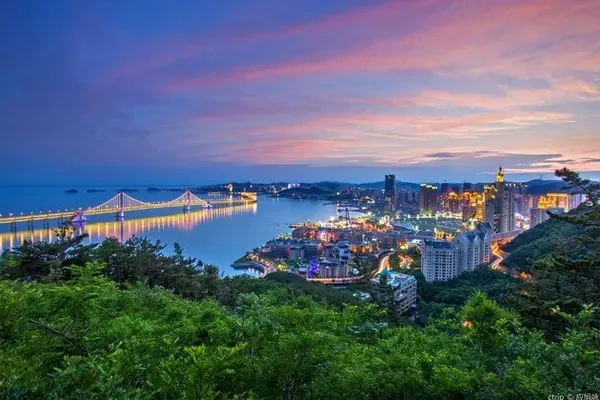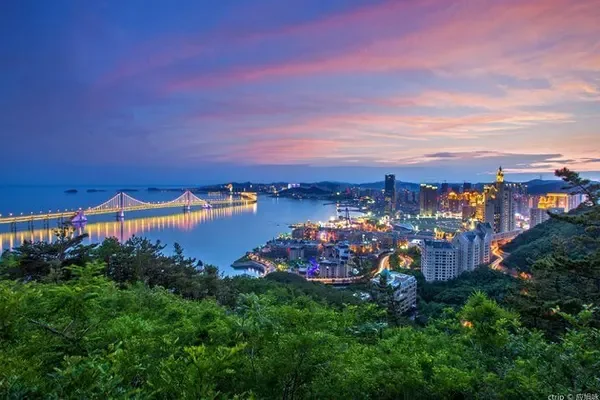Beijing weather: sunny
Accommodation: Unnamed Courtyard Hotel
Comments: Very cozy courtyard house, being in the alley itself is a scenic spot. The elegant room is slightly small, but the layout is very tasteful, the service is superb, the breakfast is rich, and the foot bath bucket and milk before going to bed are thoughtfully delivered at night. There are drinking fountains, snacks, coffee machines, and small-packaged biscuits in the yard. The nearby transportation is also very convenient, and many nearby attractions are within walking distance, such as Shichahai, Yandai Xiejie, Prince Gong's Mansion, Lama Temple, Guozijian, Nanluoguxiang, Drum Tower and so on. About 800 meters away from Metro Line 2 and Line 8, it is recommended to stay






10:00am 600-year-old Bauhinia City
The Forbidden City in Beijing is the imperial palace of the emperors of the Ming and Qing dynasties. It is located on the central axis of Beijing and covers an area of 720,000 square meters. The largest existing palace-type building is the first of the five largest palaces in the world. The other four are the Palace of Versailles in France, Buckingham Palace in the United Kingdom, the White House in the United States and the Kremlin in Russia.
In 2019, I, a southern girl, finally set foot on the land of the north and saw the Forbidden City that I had seen on TV since I was a child. What I didn't expect was that I had traveled to the five continents, but never set foot in the north of my country. It was really too late to meet the Forbidden City. After staying abroad for a long time, the more I can appreciate the beauty of the East. On that ancient Chinese land, there is the endless fighting spirit of the Chinese people from ancient times to the present.
This time I stayed in the Forbidden City for more than three hours. I followed the central axis from Meridian Gate to Shenwu Gate, and then went back to the East Sixth Palace and West Sixth Palace. .



Entering from the Meridian Gate, you can see five white marble stone bridges. On the opposite side of the bridge is the Hall of Supreme Harmony, commonly known as the Jinluan Hall. This is the main place where the emperors of Ming and Qing Dynasties held enthronement ceremonies and celebrated major festivals. In front of the main hall is a majestic lion, which symbolizes the supreme power of the emperor.

The sundial was used to calculate time in ancient times, and the corona was placed on the side of the hall, showing that the emperor had the power to control time.


The central axis is the Hall of Supreme Harmony, the Hall of Central Harmony, the Hall of Preserving Harmony, the Gate of Qianqing, the Palace of Qianqing, the Hall of Jiaotai, the Palace of Kunning, the Gate of Kunning and the Imperial Garden. The Hall of Supreme Harmony, the Hall of Central Harmony, and the Hall of Preserving Harmony belonged to the outer courts, where the emperor and his ministers dealt with official affairs.

You may notice that different animals are carved on the roof of each hall, and the number of carvings in different halls is also different. The higher the number, the higher the level of the palace, and the noble people living in it. In the palace, there is a strict hierarchy, and signs symbolizing power are everywhere.




The East Sixth Palace is neatly located on the east side of the meridian of the Forbidden City, corresponding to the East Sixth Palace on the east side of the meridian. The East and West Twelve Palaces enclose the central Housan Palace like two armpits, thus corresponding to the so-called Ye Ting in ancient times. The West Sixth Palace is the residence of the harem and concubines in the Qing Dynasty, including Yongshou Palace, Yikun Palace, Chuxiu Palace, Xianfu Palace, Changchun Palace and Qixiang Palace (Taiji Palace). Empress Dowager Zeng Cixi lived in Changchun Palace.




There are various exhibition halls in the Palace Museum, including Treasure Hall, Ancient Building Hall, Clock Hall, Sculpture Hall, etc. It collects various exhibits of thousands of years in ancient China, which have very high protection and research value, and some of them are open to the public.
14:00pm Jingshan overlooking the capital
Jingshan was built in the Liao and Jin Dynasties and has a history of thousands of years. Jingshan Park is also one of the oldest and best-preserved palace gardens in China. It used to be an important part of the imperial palace. It was not until 1928 that Jingshan was classified as a park. Walking out of the Shenwu Gate of the Forbidden City, you can see the Wanchun Pavilion in Jingshan when you look up, and the people on the pavilion are also looking at the Bauhinia City not far away.
Standing at the highest point of Jingshan Park, people can overlook the whole picture of the Forbidden City. I saw that in the huge Forbidden City, many tourists crowded together. Regardless of spring, summer, autumn and winter, the Forbidden City will always be the most popular cultural attraction in Beijing.
However, Jingshan’s history can be traced back more than 400 years earlier than the Forbidden City. At that time, the Forbidden City did not exist, and the Ming and Qing dynasties were not established. There are only mountains and rivers and fresh and pleasant natural scenery here. I hope that Jingshan can be well preserved, so that the younger generations can also have the opportunity to experience the natural scenery and humanistic style of the ancient capital of my dynasty in Jingshan Park.

In the seventeenth year of Chongzhen in the Ming Dynasty (1644), Li Zicheng led an army of 400,000 peasant rebels to attack Beijing. In the early morning of March 19th in the lunar calendar, Emperor Chongzhen climbed to Jingshan Mountain, knowing that the situation was over, he hanged himself in Jingshan Mountain.
In 1930, the Palace Museum erected the "Ming Sizong Martyrdom Monument" at the east foot of Jingdong Mountain.
In 1944, the "Ming Sizong Martyrdom Monument for 300 Years" was erected, making Jingshan Park a famous cultural landscape in Beijing.


There are five square pavilions in Jingshan, the middle peak is Wanchun Pavilion, which is also a courtyard at the highest point of Jingshan, overlooking the Forbidden City; the east side is Guanmiao Pavilion and Zhoushang Pavilion; the west side is Jifang Pavilion and Fulan Pavilion .
Jingshan garden features tens of thousands of peonies, peonies and other flowers. The seasons are different throughout the year, and the scenery park will hold flower shows of the corresponding seasons. For example, the peony exhibition in spring, the lotus exhibition in summer and the autumn chrysanthemum exhibition in autumn. The scene of clusters of flowers and evergreen pines and cypresses should be too beautiful to behold.





16:00pm Beihai Park
Beihai Park is located in the heart of the capital. It has survived the change of dynasties such as Jin, Yuan, Ming, and Qing, and it is still preserved to this day. It has accumulated nearly a thousand years of Chinese history and culture. of the classical royal gardens. Beihai Park is built with the inspiration of 'Penglai Wonderland'. Therefore, the water area occupies more than half of the area of the park. The pool named Taiye Pool was originally drawn directly from Yuquan Mountain via the Jinshui River, and the pool water has been taken from Jishuitan since the Ming Dynasty.
In Taiye Pool, there are three islands of Qionghua, Tuancheng and Xishantai respectively, which symbolize Penglai, Yingzhou and Abbot. There are lotus flowers blooming on the emerald green lake, and the shadows of the trees next to it are reflected in the lake. A cloud bridge connecting Qiongdao Yong'an Temple and the opposite bank, the scenery is beautiful and pleasant. The design of the pool and the garden of flowers and plants in the garden incomparably reflects people's yearning and strong pursuit for the Penglai Wonderland.

From Jingshan West Gate, through an alley is the entrance of Beihai Park. The old hutongs in Beijing used to belong to the imperial city, but now they are allocated to the common people. The speed of time in the hutongs is very different from that of the bustling Beijing city, as if the leisure and comfort of the ancient times have been preserved.




The White Pagoda is a Tibetan-style Lama Pagoda, which was built in the eighth year of Shunzhi in the Qing Dynasty. The emperors of the Qing Dynasty believed in Buddhism, and it reached its peak during the time of Emperor Shunzhi. The fourth-generation reincarnated soul boy of the Gelug Sect of Tibetan Buddhism is in power, and he is the first person to officially continue to use the title of Lama. The spread of Tibetan Buddhism in the mainland at that time was very famous.
The stele records that "there are lamas from the western regions who want to praise the emperor with Buddhism, please set up a pagoda and temple, and the country will bless the people." In order to conform to the hearts of the people, Emperor Shunzhi built a Tibetan-style white pagoda, and thus established this holy place of Tibetan Buddhist culture.
Someone described it like this: "Tibetan Lama pagodas are all made of bricks, the whole body is white, and the height is 40 meters. There are two layers of copper umbrella covers. The top of the tower is equipped with a treasure cover and a treasure top, and is decorated with sun, moon and flame patterns. On the top is the gold-plated orb pagoda, which houses the Lama scriptures, mantle and two relics."
In just four lines of words, a three-dimensional image of the White Tower appears vividly on the paper, which is impressive.



Every summer, the emperor brings his princes and concubines from the north gate of the Forbidden City to escape the summer heat by the waterside pavilion in Beihai Park. When fleeing the red-brick Forbidden City for a short time, the emperor and his concubines were not idle. While escaping the summer heat, they studied Buddhist legislation, thus leaving behind the famous Buddhist palaces such as Daxitian and Xiaoxitian, as well as colleges such as Jingxinzhai. place.

Buddha statue carved on the White Pagoda.



The Beihai Park surrounded by pools is extremely beautiful, and it is also a very good choice to come here to cool off in midsummer. At the same time, you can feel the Buddhist culture and the artistic atmosphere of the ancient royal gardens in my dynasty. Where is the real 'Penglai Wonderland' in this world? Since you can’t find it, why not come to Beihai Park to have a look.
19:00pm Walk into Nanluoguxiang
There are many snacks in Nanluoguxiang, including yogurt, Beijing roast duck rolls, etc., and there is even a Hanfu shop, which is really surprising. Because Lan Xi was so happy shopping, she didn't even leave a single picture. But after returning from the park, you can go to Nanluoguxiang to have some snacks and then take a stroll.
The twenty-four hours at the foot of the imperial city ended in this way.
tips
The Forbidden City can only be entered from the Meridian Gate, and the exits include Shenwu Gate and Dongzhi Gate. To visit the Forbidden City, you must buy tickets online in advance.


